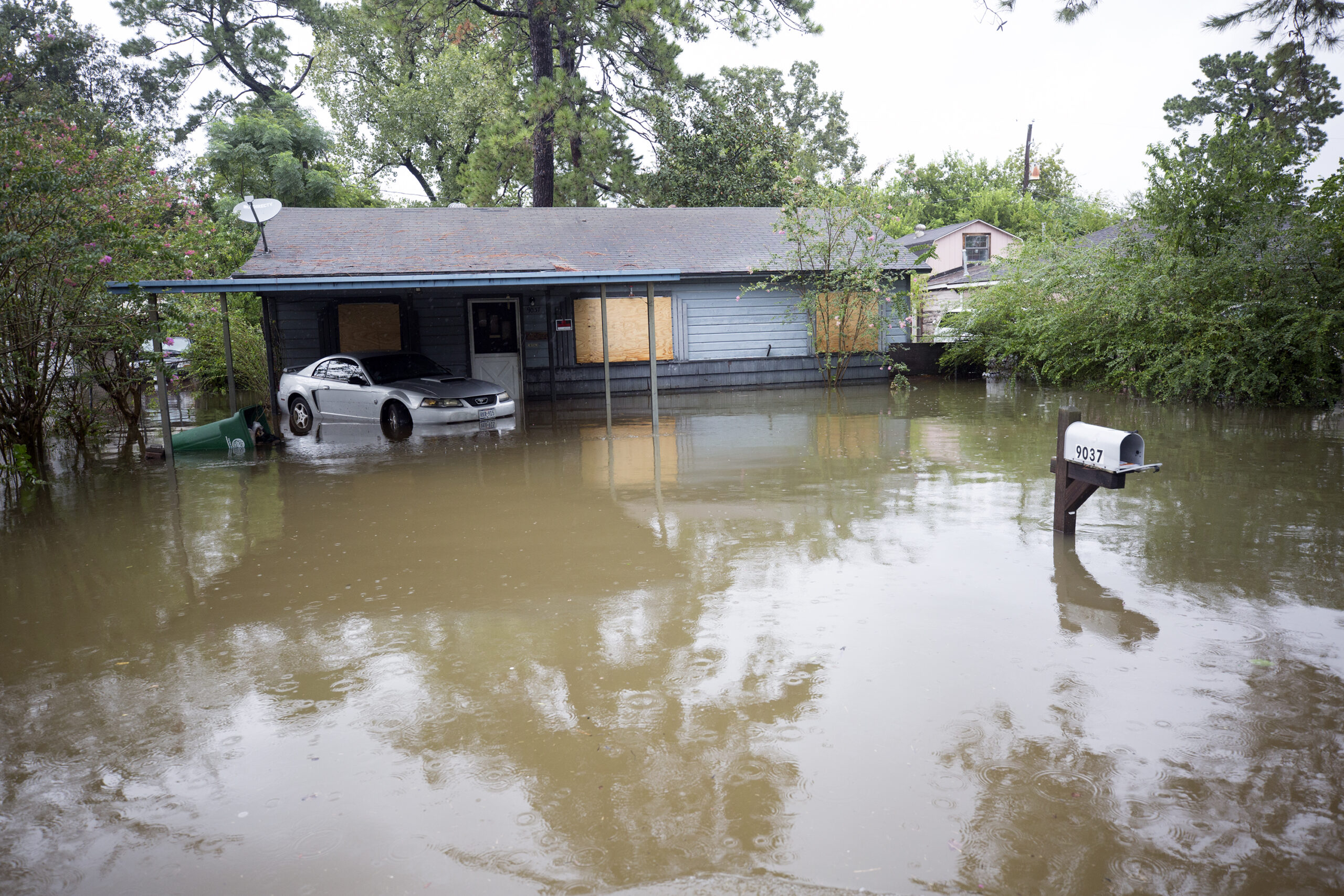The U.S. Supreme Court ruled in favor of Texas landowners seeking to sue the state for damages after repeated flooding.
Richie DeVillier is a farmer and rancher in Winnie, a small, rural community in southeast Texas. In recent years, his property and others’ have flooded during strong storms.
But DeVillier says his place didn’t always flood. It only became a problem after the Texas Department of Transportation made some changes to a nearby section of Interstate 10 in the early 2000s. A dispute over whether DeVillier and his neighbors could sue the state for damages made it all the way to the U.S. Supreme Court, which made a decision in the case this week.
Tiffany Dowell Lashmet, author of the Texas Agriculture Law Blog, spoke to Texas Standard about the ruling. Listen to the interview above or read the transcript below.
This transcript has been edited lightly for clarity:
Texas Standard: So what did the court decide in this case?
Tiffany Dowell Lashmet: Kind of the big takeaway is that Mr. DeVilliers and the other plaintiffs in the lawsuit can proceed with their claims under both the Texas Constitution and the Fifth Amendment to the United States Constitution. Maybe just as interestingly, is what the court did not decide. And that is sort of an interesting question of kind of how these claims can be brought.
One issue in the case is that the state of Texas said that to bring a claim against the state under the United States Constitution, Mr. DeVilliers had to do so under a specific statute. Mr. DeVilliers said that he didn’t have to have a statutory basis. He could just bring it kind of directly under the United States Constitution.
That really was the question that the court took this case up on, and they did not answer it. They said that they didn’t have to answer that question to resolve this case, because there is a statutory basis for Mr. DeVilliers claim. And specifically, they said the reason they don’t have to answer that is Mr. DeVilliers has stated a state law claim under the inverse condemnation claim he made, and that could apply to both the Texas Constitution and the United States Constitution.
Can you just describe what you mean by “inverse condemnation” real quick?
Absolutely. So an inverse condemnation action comes up when the state takes some sort of action here. They built the modifications to I-10 that a landowner believes results in a taking of their private property.
For example, a regular condemnation lawsuit, maybe, is the state comes in and says, “we’re going to take your private property to build an interstate and we’re going to pay you just compensation.” In an inverse condemnation action like this, the state took action but did not offer any payments to Mr. DeVilliers. And so he filed the lawsuit saying, “wait a minute, my private property was taken and now I’m seeking monetary damages.”
» GET MORE NEWS FROM AROUND THE STATE: Sign up for Texas Standard’s weekly newsletters
Did the court weigh in at all on whether Mr. DeVilliers and the other folks involved in this case may prevail? Did they weigh in on the merits in and of themselves?
Yeah, I think that’s a really important question. The court did not look at all at the merits of the lawsuit. So the fact that the landowners won this decision in the court doesn’t have any bearing at all, and doesn’t give us any insight as to whether or not they may or may not be successful on their specific claims down the road.
And just to be clear, is it just Mr. DeVilliers here, or is he a stand-in for many plaintiffs?
Yeah, it’s absolutely not just Mr. DeVilliers. In fact, there are over 120 landowners, all of whom own property on that north side of I-10 and Jefferson and Chambers counties that all filed these lawsuits. They were consolidated into one legal action against the state.
So we talk about Mr. DeVilliers just because he was kind of the first one named on the list. But like I say, there are more than 120 additional landowners as well.
I remember driving through that area after Tropical Storm Imelda, and it was remarkable the extent to which the community was just under water. Moving forward, what sort of actions might we see brought forward now as a result of this Supreme Court ruling?
So I think the first thing that we’re likely to see is the plaintiffs seek to amend the complaint to make clear that they’re basing their Fifth Amendment challenge on the Texas inverse condemnation claim, and then litigation will proceed. And so it’ll just move forward, likely like a regular lawsuit would.
Will this ruling have ripple effects, potentially, beyond just this case? I mean, are there any new kinds of precedents being set here, in your view?
You know, I don’t think so. And the reason for that is because the court kind of punted on the question, as to whether or not someone could bring a claim without a statutory basis under the Fifth Amendment.
Had they answered that question either yes or no, I think that would have had broader implications here. They just simply said that there is a statutory basis, so they didn’t need to address that question.
So honestly, beyond the 120-some plaintiffs in this case, I’m not sure that this decision really has any broader implications.















